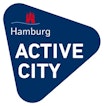Triathlete to Roadie: Make the Leap
01 April, 2017

by Melanie McQuaid
Looking into making the leap from triathlon to cycling races? With the right equipment, specific training adaptations, and skills practice, any triathlete can morph into a competent and even competitive cyclist. Road cycling offers a different culture and new challenges that many endurance athletes come to enjoy.
Road racing is tactical, dynamic, and unpredictable, offering a new challenge for athletes accustomed to the long, individual time trial effort of long course triathlon. Ready for a refresh? Below, we outline the equipment changes, specific skills, and the training tweaks required to make the leap into road cycling races from the multisport life.
The basics: Rules and gear
Shifting from triathlon to road cycling involves a few key equipment changes. To begin with the basics, the rules governing cycling races are specific to what kind of bike is allowed. (Triathlon has fewer restrictions on bike design, so a wider variety of bikes are acceptable.) Along with bike restrictions, the specific rules addressing potential equipment changes required for cycling races are outlined below.
A time trial bike is unsuitable for road racing. A road bike with detachable aerobars must have the aerobars removed for road cycling races. The bike must have drop bars which eliminates all bikes with an integrated aerobar cockpit. The International Cycling Union (UCI)—the organization governing the sport of cycling—requires that bikes have three main tubular shapes: a top tube, downtube, and seat tube. This rule eliminates all of the triathlon superbikes (the "Y" shaped aero bikes) from road racing.
Cycling rules require the wheels on the bike to have a minimum of 12 spokes, and any component of the bike must not be wider than eight centimeters (frame width, handlebars, and rims). This excludes deep aero rim wheels and disc wheels/covers from cycling races.
Wearing a helmet is compulsory in road racing, as it is in triathlon. There are a variety of aero road helmets that are legal in road racing, but helmet covers are not allowed. Similarly, head "fairings" are unacceptable, so long, time trial helmets with "tails" are not legal for road racing.
Triathlon shoes are suitable for road racing. Athletes preferring a more secure fit around the foot may choose a road-specific shoe over a triathlon shoe. A tighter fit eliminates any power loss at maximum effort due to the foot moving around in the shoe. Triathlon shoes are designed to shed moisture and to be easy to put on and take off, which can leave extra space in the shoe. Depending on how the shoe fits, the difference in a road shoe may be negligible. This decision between the shoes is made based on preference, rather than as a requirement.
Finally, the following rules address some other items commonly used by triathletes that are regulated in road cycling:
Socks may only come up to mid-calf (no calf sleeves or knee-high compression socks)
Hydration packs may be worn but only on the back (not on the chest to cheat the wind)
No integrated water bottles or bladders in the frame
Jerseys must cover the shoulders (no sleeveless jerseys or triathlon suits)
Skills
Switching from non-drafting triathlon to road cycling races means learning to ride in a group. Drafting is not only legal, but is a key component of road racing. After a mass start of the field, the first rider across the finish line is the winner. Riding safely and confidently in a pack takes practice. Experience riding in a group with many other riders is important, especially for triathletes who are accustomed to riding alone.
Related Article: Strengthen a Weakness with Road Races
A weekend group ride is the perfect place to practice the skills necessary to ride in a pack. Learning the words and gestures that warn following riders of obstacles, obstruction, or directional change is important as well. Having an experienced rider explain the rules of each group helps.
Sometimes jostling and contact between riders happens in a cycling race. Getting comfortable relaxing and absorbing small amounts of contact in the group eliminates any sudden braking or jerking movements.
Riding with no hands on the bars is an important skill. There are no stops in a road race so removing or replacing clothing and getting bottles while riding requires taking your hands off the bars. Learning to balance on the bike without the use of the hands creates better balance and fluid riding in the pack. Riding at very slow speed also helps develop balancing skills.
Alison Jackson is a Canadian former triathlete who is now racing professionally with the BePink race team in Europe. "I would practice balancing on my bike by riding as slow as possible, or try to ride on the lines in a parking lot," he suggests. "The more confident I became in my balancing skills on my bike, the more comfortable I felt in a peloton. I knew that I could handle my bike and react to other people around me."
Stepping up: Training and racing
Training for cycling races requires high cadence and intensity. A cycling race involves repeated maximum efforts while responding to attacks, surging in the group, or sprinting the finish—efforts which require short bursts of high power. This can pose a challenge for long course triathletes accustomed to training to sustain sub-threshold power.
Producing high power and recovering quickly requires speed endurance. Improving speed endurance is achieved by training high cadence and short, maximal efforts. The strength and endurance focus of a triathlon program is a great platform for building speed and power. It only takes a few weeks focusing on higher cadence and power intervals for speed to noticeably improve.
Find a VELOTHON event here
Spencer Smith is a British triathlete who won two ITU World Championships before switching to road racing with the Linda McCartney race team. "What I initially noticed was that everybody was strong in the peloton, not just a few. Bike racing is a completely different sport requiring tactics and racing as a team. You need time and patience to adapt to the different demands it throws at you."
Triathletes have a strong base of fitness to transfer to cycling. Switching to road racing from triathlon requires specific equipment, speed endurance training, and pack skills practice—which will come with experience. The main requirement at the beginning is the patience to learn and adapt to a new sport. Let's get riding!













.png?h=106&auto=format)
